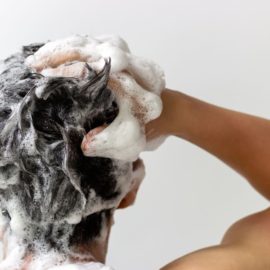When it comes to eco-friendly packaging, cosmetics brands need to pay attention, and a few figures speak for this need:
In 2020, 47% of consumers said they believed that climate change would impact their lives in the future more than it did now – which is a five percentage point increase from the year before.
- Subsequently, consciousness and ethical beauty around environmentally-friendly habits is rising: 58.8% of consumers recycle and 59.7% are reducing food waste (Euromonitor International, 2020). Equally, people are concerned about saving water: in the United States, 30% of consumers are trying to cut water usage during their bathing routines (Mintel, 2019).
- However, of particular concern is plastic waste. In the same Euromonitor survey, 64.3% of consumers claim to have reduced plastic use to positively impact the environment or lead a more sustainable life.
- Subsequently, consciousness around environmentally-friendly habits is rising: 58.8% of consumers recycle and 59.7% are reducing food waste (Euromonitor International, 2020). Equally, people are concerned about saving water: in the United States, 30% of consumers are trying to cut water usage during their bathing routines (Mintel, 2019).
However, of particular concern is plastic waste. In the same Euromonitor survey, 64.3% of consumers claim to have reduced plastic use to positively impact the environment or lead a more sustainable life. Considering the amount of plastic the cosmetic industry uses, it’s time to change – not just to meet demand, but to protect the planet.
In such a context, developing eco-friendly packaging in cosmetics is a crucial requirement to meet consumer demands, a movement attested by the success of solid shampoo. Keep reading to find out new consumer preferences for sustainable packaging in cosmetics, how brands should follow and how to join the solid shampoo trend by also joining the current predilection for botanical ingredients.
Content
The rising demand for eco-friendly packaging cosmetics in brands
Estimates suggest that 120 billion units of packaging are produced every year by the cosmetics industry. The use of multi-layered boxes, cellophane, and other superfluous, non-recyclable materials ultimately ends up in our landfills and oceans. This, of course, is a huge environmental crisis – and consumers know it.
Between 2016 and 2020, demand for eco-friendly packaging in cosmetics has increased across all beauty segments, including skincare, haircare, and color cosmetics.
In hair care alone, demand has jumped by 3% for recycled packaging and 2% for recyclable packaging, among other key movements such as the choice for bamboo cosmetic packaging. Consumers are also interested in other sustainable solutions, like refillable bottles and building an ethical supply chain that includes responsible ingredient sourcing, among other measures.
However, one of the most compelling innovations among eco-friendly packaging cosmetics is is doing away with packaging altogether. This, of course, meets consumers’ rising interest in eliminating plastic from their personal care routines: right now, 54% of German consumers are interested in trying packaging-free personal care products (Mintel, 2019). Solid formats, such as soap and shampoo bars, meet this demand head-on.
Provital’s formulas for eco-friendly packaging in cosmetics
Considering the demand for eco-friendly packaging cosmetic brands should look for partners who prioritize sustainability.
Provital is committed to making the beauty industry more environmentally friendly. In light of the imperative to reduce packaging to the absolute minimum, we have worked to develop a few eco-friendly packaging cosmetics formulas that meet this demand.
Perhaps the most interesting suggestion is our solid shampoo formula. A blend of active ingredients exclusive to Provital, it provides gentle, calming, cleansing and moisturizing effects for the hair and scalp.
Primarily, Vitaoils Plus deeply moisturizes with a blend of rich natural oils to smooth and protect. Meanwhile, Aloe Vera Gel-ECO calms the scalp, and the blended seaweed extract Polyplant Normal Hair GNBN conditions the scalp as well as the hair. This creates a smoother, more luxurious texture as a healthy scalp is integral to healthy hair.
Plus, this blend is 72% natural in origin and waterless. Not only does this meet consumers’ demand for eco-friendly packaging in cosmetics reduced plastic, but it also delivers on their preference for natural ingredients and tendency towards conserving water.
Sustainably sourced and scientifically developed, this solid shampoo formula is ready to be taken straight to market, so brands can differentiate themselves as the eco-friendly packaging movement gains pace.
No comments yet
There are no comments on this post yet.





Leave a comment